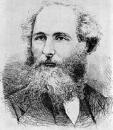| |

Home
Overview
Instructors
Course Info
Communications
Calendar
Unit Topics
Notes
Videos
Problem Sets
Zoom
Email
Discussion
Slack
|
|
|
|
PHY 415: Electromagnetic Theory I
Prof. S. Teitel: stte@pas.rochester.edu ---- Fall 2020
Notes
On the Calendar
page, each Wednesday shows how far in the notes you should have read up to. For example, Wednesday September 2 says "Notes 1-3", meaning you should have completed reading through to the end of Notes 1-3 by that day's Discusssion Session.
- Unit 1 - Review of Maxwell's Equations
- Notes 1-1 - Electrostatics
- Notes 1-2 - Magnetostatics
- Notes 1-3 - Faraday's Law and Maxwell's Correction to Ampere's Law, Systems of Units
- Notes 1-4 - Electromagnetic Potentials and Gauge Invariance
- Notes 1-5 - Review of Fourier Transforms
- Notes 1-5-supp - Review of Fourier Series and derivation of Fourier Transforms
- Notes 1-supp - Review of Vector Calculus and Math Methods: surface and line integrals; rectangular, spherical and cylindrical coordinates; vector differential operators and their expression in different coordinate systems; integral vector calculus: Gauss' Theorem and Stoke's Theorem; the Dirac delta function
- Unit 2 - Electrostatics and Magnetostatics
- Notes 2-1 - Electrostatics as a boundary value problem
- Notes 2-1-supp - Supplemental: Green's identities, uniqueness, Green's functions for Dirichlet and Neumann boundary conditions
- Notes 2-2 - The image charge method
- Notes 2-3 - The method of separation of variables
- Notes 2-3-supp - Supplemental: Eigenfunction expansion for the Green's function
- Notes 2-4 - The electric multipole expansion
- Notes 2-5 - Magnetostatics
- Notes 2-6 - Symmetry
- Unit 3 - Macroscopic Maxwell's Equations in Matter
- Notes 3-1 - Dielectric materials: Polarization density, electric displacement field D, bound charge
- Notes 3-2 - Magnetic materials: Magnetization density, magnetic field H, bound currents
- Notes 3-3 - The Macroscopic Maxwell Equations
- Notes 3-4 - Linear materials, Clausius-Mossotti equation, behavior at interfaces, examples
- Notes 3-5 - A charge off-center inside a dielectric sphere
- Notes 3-6 - Bar magnets
- Unit 4 - Electromagnetic Energy and Momentum
- Notes 4-1 - Electromagnetic energy density and the Poynting vector
- Notes 4-2 - Electromagnetic momentum density, the Maxwell stress tensor, and the force on a conductor's surface
- Notes 4-3 - Capacitance and Inductance
- Notes 4-3-supp - Supplemental: Forces, Torques, and Interaction Energy of Electric and Magnetic Dipoles
- Notes 4-4 - Energy and momentum of an electromagnetic wave in a vacuum
- Unit 5 - Electromagnetic Waves in Dielectrics and Conductors, Polarization, Interfaces
- Notes 5-1 - Electromagnetic wave propagation in dielectrics, frequency dependent atomic polarizability
- Notes 5-2 - Transparent propagation, resonant absorption, total reflection
- Notes 5-3 - Electromagnetic wave propagation in conductors, frequency dependent conductivity
- Notes 5-4 - Linear, circular, and elliptical polarization of electromagnetic waves
- Notes 5-5 - Reflection and transmission of electromagnetic waves at interfaces
- Notes 5-5-supp - Supplemental: Total internal reflection revisited
- Notes 5-6 - The Kramers-Kronig relation
- Unit 6 - Radiation and Fields from Moving Charges
- Notes 6-1 - Green's function for the wave equation, the Lienard-Wiechert potentials
- Notes 6-2 - Radiation by a localized harmonically oscillating source
- Notes 6-3 - Radiation in the electric dipole approximation
- Notes 6-4 - Radiation in the magnetic dipole and electric quadrupole approximations
- Notes 6-5 - Radiation from arbitrarily time varying sources and Larmor's formula
- Unit 7 - Maxwell's Equations and Special Relativity
- Notes 7-1 - Review of special relativity and the Lorentz transformation, 4-vectors and proper time
- Notes 7-2 - Maxwell's equations in relativistic form
- Notes 7-3 - Relativistic kinematics, relativistic momentum and energy, the Lorentz force
- Notes 7-4 - The Relativistic Larmor's formula
- Notes 7-5-supp - Supplemental: The relativistic form for the Maxwell stress tensor, energy and momentum conservation
|
|